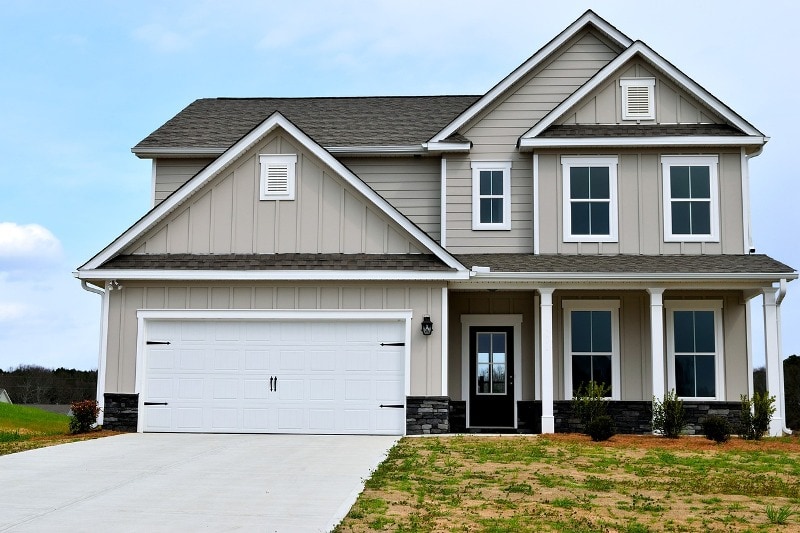Your Best Mortgage Options — Instantly
- Get matched with vetted mortgage lenders in minutes
- Save time with one simple form — no need to shop dozens of sites
- No credit impact. No sales pressure. Just the best fit for your goals
If you’re searching for a home loan that offers a low down payment option, USDA loans in Maine could be the mortgage you’ve been looking for.
While homeowners have various financing options, few home loans offer Mainers 100% financing with interest rates this low.

USDA loans in Maine help borrowers buy a home with no money down, potentially saving them thousands of dollars in upfront costs.
Let’s look at an example.
FHA home loans require a down payment of at least 3.5% for qualified borrowers. That means if you want to buy a home for $200,000 using an FHA mortgage, you’ll need to have $7,000 in cash to pay at closing—in addition to any closing costs.
Because USDA loans in Maine have a $0 minimum down payment, that’s $7,000 you don’t need to save. You’ll still need to pay closing costs, but USDA loans give borrowers a few options to lessen this expense, including:
USDA home loans are residential mortgages backed by the Department of Agriculture.
They’re available to eligible borrowers buying homes in suburban or rural areas of a state. USDA loan requirements are aimed at helping low- to moderate-income families purchase safe homes in less densely populated areas.
USDA loans can go by a few different names, including Rural Development or RD loans, or even “Section 502” loans—named for the USDA rulebook section that describes the home loan program.
Despite the “rural” element, USDA loans are only available for single-family, owner-occupied homes; you can’t use USDA loans to purchase farms, investment properties, or vacation homes.
USDA loans in Maine can be used in areas that meet the USDA’s definition of “rural.” Because the USDA considers most areas with 35,000 residents or less as eligible for USDA loans, most of Maine qualifies.
You can check the USDA’s eligibility map to see if your area qualifies.
Let’s look at a few USDA-eligible areas in Maine.
Presque Isle, Maine
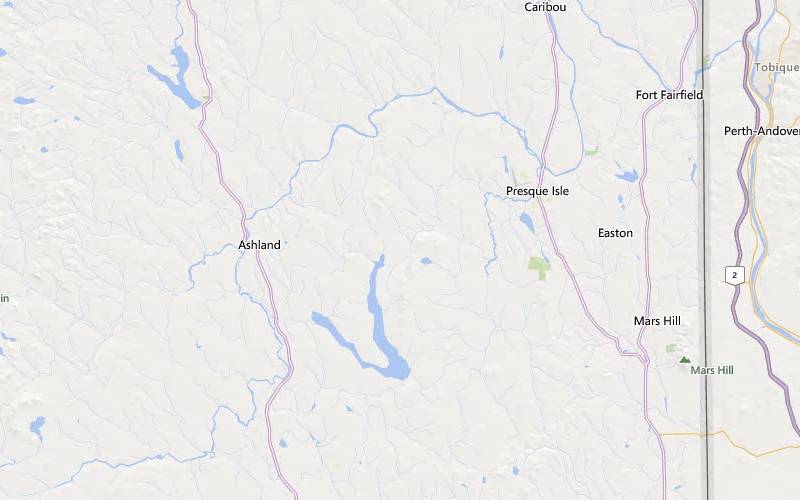
Located in beautiful northern Maine, Presque Isle is a vibrant community of just under 9,000. It’s also the commercial center in Aroostook County. Presque Isle attracts thousands of tourists annually, who enjoy its small-town friendliness and big-city amenities.
In addition to a strong, diverse economy, northern Aroostook County’s more than 3 million acres of unspoiled, natural wilderness is a beacon to outdoor enthusiasts across the country, contributing to a thriving, year-round tourism and hospitality industry.
Presque Isle median home price: $176,000
Bangor, Maine
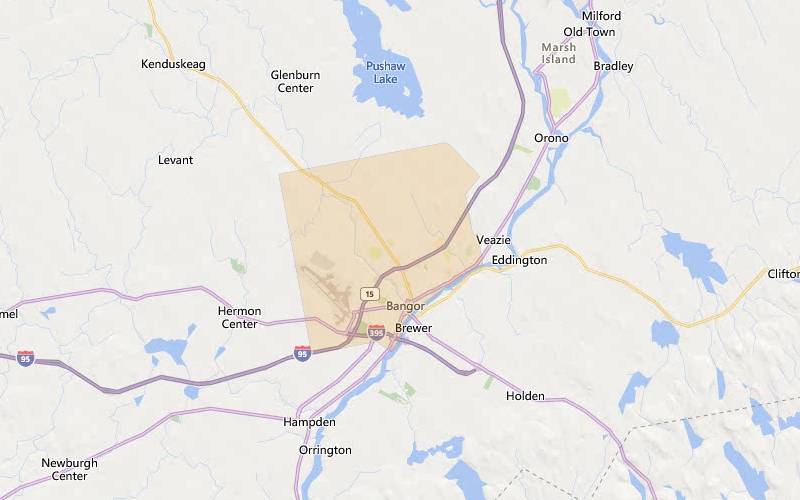
With a population of just over 31K and a robust downtown, including great eateries, libraries, and shops, parts of Bangor, Maine, are eligible for USDA home loans. Bangor is home to the Maine Discovery Museum, a hands-on nature, science, and art museum aimed at kids.
The University of Maine’s Museum of Art features modern and contemporary artworks, while Bangor City Forest offers countless trails through beaver- and deer-inhabited woods. And horror fans should keep an eye out for authors Stephen King and his wife Tabitha, both born-and-bred Mainers, who still call Bangor home. Minutes outside Bangor, you’ll find USDA eligibility in Brewer, Hermon, and Glenburn.
Bangor median home price: $226,000
Portland, Maine
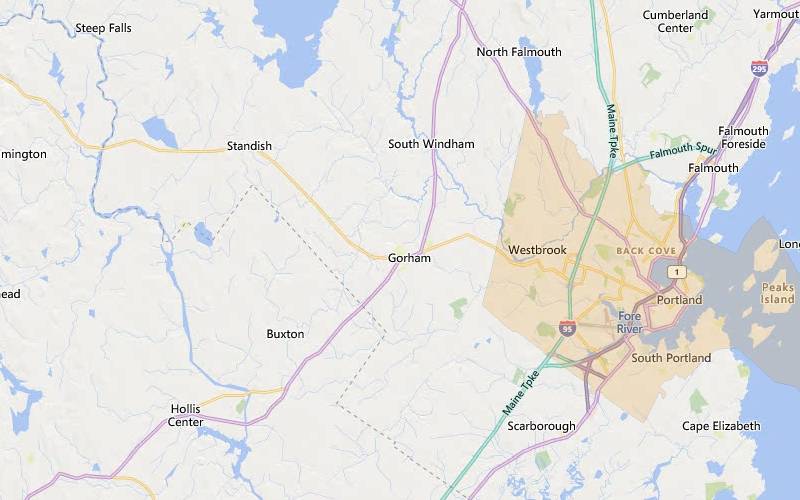
With a population of almost 70,000, Portland is Maine’s largest city that still holds on to its quintessential New England charm. A scenic working waterfront with fishing wharves, cobblestone streets, local shops, award-winning restaurant galleries, parks, live entertainment venues, and more makes Portland a destination of choice for new graduates, young families, and retirees.
Portland builds on business and tourism industries to deliver big-city comforts without big-city headaches. Find eligible properties on the outskirts of Portland, and in Falmouth, South Windham, and Scarborough.
Portland median home price: $570,000, but more affordable homes in the area.
Lewiston, Maine
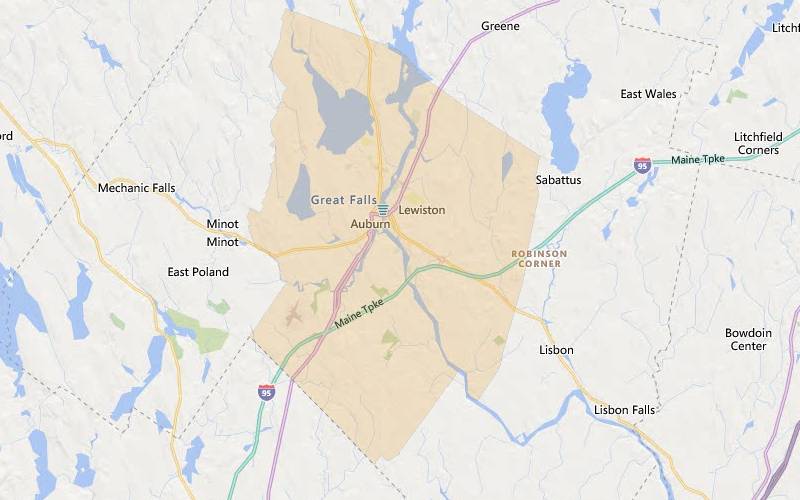
Maine’s second-largest city is home to almost 40,000 people and has many neighboring areas eligible for USDA loans. Lewiston’s vibrant cultural and business community offers an affordable cost of living and a thriving economy that includes manufacturing, financial, technology, telecommunications, and world-class healthcare facilities.
Home to the renowned University of Southern Maine (Auburn College), Lewiston is recognized as a leader in fine arts and cultural offerings. Find eligible homes in Lisbon, Sabattus, and Greene.
Lewiston median home price: $258,900
Ogunquit, Maine
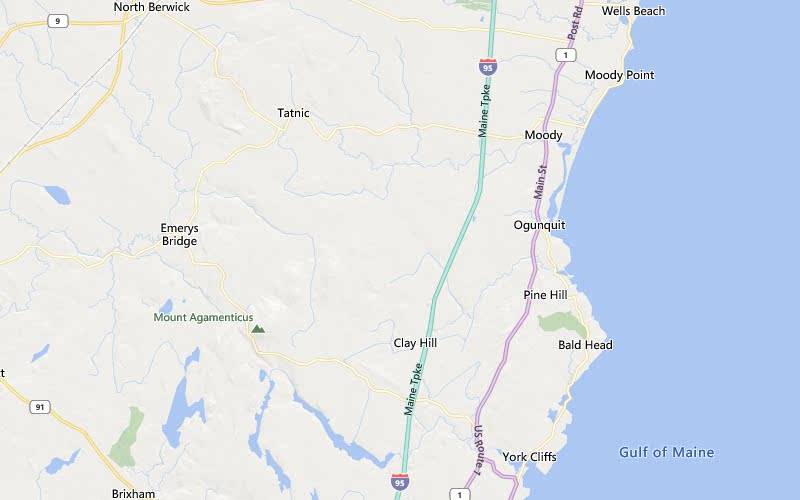
Situated on Maine’s stunning southern coast, Ogunquit attracts visitors from every corner of the country year-round. Its sandy beaches and iconic lighthouses provide the backdrop for the town’s bustling arts and culture scene. Ogunquit’s strong tourism industry is just one aspect of the thriving small town. With restaurants, clubs, shops, and schools, Ogunquit is the little town attracting national attention—and new residents—every year.
Ogunquit median home price: $762,500 with more affordable homes available in outlying locations.
See if your area is eligible.The majority of Maine falls under the USDA income limit for 1-4 member households of $103,500. Most households in Maine with between 5-8 members have a $136,600 income threshold. You can find all Maine USDA income limits here.
USDA loans in Maine count your entire household income—not just the income of those on the actual loan application—when determining eligibility.
To help borrowers meet that eligibility, the USDA allows for certain deductions such as childcare, medical expenses, dependents, costs associated with elder households, and more. To see which deductions your family can qualify for, check the USDA’s income tool.
| County or Area | 1-4 member household income limit 2022-2023 | 5-8 member household income limit 2022-2023 |
| Bangor | $103,500 | $136,600 |
| Penobscot | $103,500 | $136,600 |
| Portland | $128,450 | $169,550 |
| Aroostook County | $103,500 | $136,600 |
| Kennebec County | $103,500 | $136,600 |
| Lincoln County | $103,500 | $136,600 |
| Oxford County | $103,500 | $136,600 |
| Washington County | $103,500 | $136,600 |
| Waldo County | $103,500 | $136,600 |
| Piscataquis | $103,500 | $136,600 |
Learn more about USDA income limits.
To qualify for a USDA loan, borrowers need to prove they have a consistent income stream. This typically involves showing evidence of steady earnings over time. Acceptable forms of income may include:
Lenders want to see that these income sources are reliable and sufficient to cover monthly mortgage payments and other expenses. This stability helps assure lenders of a borrower’s ability to repay the loan over time.
USDA loans Maine require a $0 down payment. In other words, USDA loans allow borrowers to finance 100% of their home’s purchase price.
Borrowers do need to cover closing costs, however, which typically equal between 3-5% of the home’s purchase price. Closing costs include loan origination fees, lawyer’s fees, and more.
The USDA does permit borrowers to use other sources, such as monetary gifts from family, to pay closing costs.
Learn more about USDA Loan Down Payment and Closing Costs.
The Maine State Housing Authority offers first-time homebuyers funds towards closing costs and down payment assistance through their Advantage program.
Advantage can provide up to $5,000 to eligible buyers who take approved homebuyer education.
USDA loans do not have loan limits, but they do use local income limits to indirectly cap the amount a homeowner can borrow.
For example, if you live in Bangor, your household income would be limited to $103,500. That works out to a monthly gross income of $8,625 and an estimated home price of $325,000. You can see how other factors, like debt-to-income ratios, can impact how much you can borrow.
| Monthly income | $8,625 |
| Principal, Interest, tax, insurance, HOA, mortgage insurance | $2,500 |
| Front-end debt-to-income | 29% |
| Student loans, auto loans, all other payments | $1,000 |
| Back-end debt-to-income | 41% |
| Example mortgage rate | 6.5%* |
| Estimated home price based on the above | $325,000 |
Mortgage rates, payments, and fees are for example purposes only. Your costs will vary.
USDA debt-to-income ratio
USDA loans in Maine use standard 29/41 debt-to-income (DTI) ratios. This means 29% of a borrower’s gross income can go toward housing (mortgage principal and interest, plus taxes, insurance, and any homeowner fees).
The broader DTI—all money paid on all debts, including housing payments—can be up to 41%.
But USDA lenders in Maine can approve higher DTIs for borrowers with compensating factors like good credit rating.
Check with a USDA lender to see if you qualify.
Because the US government “guarantees,” or backs, USDA loans in Maine, there’s less lender risk.
If a borrower is unable to repay the home loan in full, the government steps in and repays the lender up to 90% of the original loan amount. Less lender risk means lower USDA home loan interest rates for borrowers.
Because they are focused on helping low and moderate-income households buy “adequate, modest, decent, safe and sanitary” homes, USDA loans in Maine require all properties to meet a minimum property condition standard: a home must be in a livable condition at closing.
A home needing minor or cosmetic repairs wouldn’t have difficulty qualifying. In contrast, a home requiring structural repairs, like fixing a crack in the foundation or installing a new roof, would need to have these repairs completed before closing to qualify.
USDA uses property standard guidelines similar to those set out by the FHA.
When you’re applying for a USDA loan, the property appraisal plays a crucial role for several reasons. Here’s why it’s an essential step in the process:
In summary, a property appraisal is indispensable in securing a USDA loan, as it confirms the home’s value, ensures compliance with required standards, and supports the financial interests of all parties involved.
Is a USDA loan right for you? Let’s look at the main USDA pros and cons.
Advantages of USDA loans in Maine include:
Disadvantages of USDA loans include
FHA loan: Backed by the Federal Housing Administration; offers 3.5% down payment; requires insurance for the lifetime of the loan
VA loan: restricted to military servicemembers, veterans, and eligible surviving spouses; offers zero down payment; backed by the Department of Veterans Affairs.
Conventional loan: Offers 3% down payment; requires good to excellent credit.
| Loan feature | USDA | FHA | Conventional |
| Income limits | $103.5k-$238.2K | None | None |
| Geographic restrictions? | Yes | No | No |
| Down payment | 0% | 3.5% | 3% |
| Min. credit score | 580-640 | 580 | 620 |
| Loan limits for 1-unit home | None | $420,680-$970,800 | $647,200-$970,800 |
| Upfront mortgage insurance | 1.0% of loan | 1.75% of loan | None |
| Monthly mortgage insurance | 0.35% of loan annually | Typically 0.85% of loan annually | 0.40-3%+ of loan annually; varies by down payment, credit, etc. |
The USDA doesn’t specify a minimum credit score. Individual USDA lenders establish credit requirements. Most local USDA lenders in Maine, however, require scores in the 620-640 range, although some will accept scores below 600.
Navigating the path to securing a USDA loan after experiencing financial setbacks like bankruptcy or foreclosure involves understanding the specific waiting periods set by lenders. Here’s what you need to know:
These waiting periods are designed to provide borrowers with enough time to rebuild their financial profiles. During these years, it’s essential to maintain a clean credit history, manage debts wisely, and establish a steady income stream. Doing so not only enhances your chances of approval once the waiting period is over but also positions you for more favorable loan terms.
By understanding and adhering to these guidelines, prospective borrowers can strategically plan their financial recovery and increase their chances of obtaining a USDA loan once eligible.
See if your credit score qualifies you for USDA.These loans require borrowers to pay two different mortgage insurance fees: Annual and Guarantee fee.
Guarantee fee
Borrowers pay 1% of their total loan amount at closing. For example, borrowers would pay a one-time fee of $3,000 on a $300,000 mortgage. Many borrowers opt to roll the USDA Guarantee Fee into the loan, reducing out-of-pocket expenses.
Annual fee
This annual fee is equal to 0.35% of the annual outstanding mortgage balance. The annual fee is divided into 12 equal amounts and added to your regular monthly mortgage payment.
It works out to approximately $29 monthly for every $100,000 borrowed. For example, borrowers would pay an additional $87 as part of their monthly mortgage payment on a $300,000 mortgage.
The Guarantee and Annual fees contribute toward the sustainability of the USDA loan program nationwide.
The USDA offers two different loans: Guaranteed and Direct.
Guaranteed loans
Guaranteed loans are offered by private lenders and make up most of the USDA loans offered in the US.
Direct loans
Direct loans are offered “directly” from the USDA and are aimed at helping “low and very low” households—annual household income between $31,550 to $50,500—buy a home.
Note: We cover the USDA loan requirements for Guaranteed loans in this article. For information on Direct USDA loans, see the USDA website.
The USDA loans have an extra step compared to most other mortgages—they require approval from the lender and the government agency.
The additional step can add a few extra days or weeks to the processing timeframe. But otherwise, applying for a USDA loan in Maine is as straightforward as applying for any other mortgage.
Yes! Most of the state of Maine is eligible for the USDA’s no-down-payment loan program, including many parts of Lewiston, Bangor, and Portland.
There are no loan limits for USDA loans in Maine. Instead, the USDA looks at the borrower’s income. Eligible households should have a maximum annual income of $103,500 for most of Maine to qualify.
Most lenders in Maine require a minimum credit score between 620-640, although some will consider scores below 600.
With most of the state of Maine eligible for USDA loans, borrowers looking for no-down-payment, low-interest loans could qualify for a mortgage in their preferred neighborhood.
To determine your eligibility, consider the following key requirements:
By understanding these requirements, you can better prepare yourself for the USDA loan application process in Maine. Consider consulting with a knowledgeable lender who can guide you through each step, enhancing your chances of securing your dream home with a USDA loan.
See if you qualify for a zero-down USDA loan.Our advice is based on experience in the mortgage industry and we are dedicated to helping you achieve your goal of owning a home. We may receive compensation from partner banks when you view mortgage rates listed on our website.
